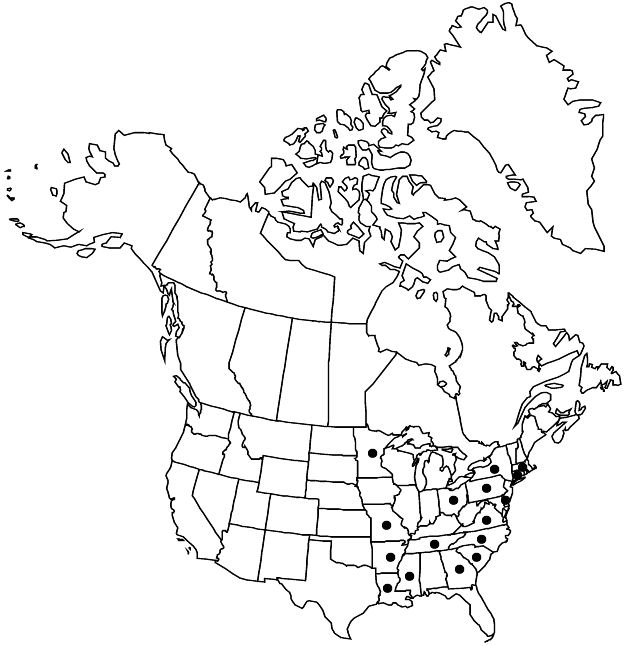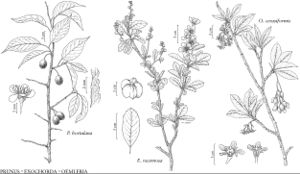Exochorda racemosa
in C. S. Sargent, Pl. Wilson. 1: 456. 1913.
Common names: Common pearlbrush
IllustratedIntroduced
Basionym: Amelanchier racemosa Lindley Edwards’s Bot. Reg. 33: sub plate 38. 1847
Synonyms: Exochorda grandiflora Lindley
Treatment appears in FNA Volume 9. Treatment on page 384.
Branchlets redbrown, turning brown in following year. Leaves: petiole 4–7 mm; blade apex rounded to obtuse, usually minutely apiculate. Bracteoles 2, deciduous, linear to oblong, small, petaloid. Pedicels 3–11 mm, proximal bract leaflike, other reduced. Flowers: sepals 2.1–3 mm; petals 12–20 mm; anthers 0.8–1.4 mm.
Phenology: Flowering spring.
Habitat: Forest borders, exotic-dominated woods, disturbed sites, areas of cultivation
Elevation: 10–200 m
Distribution

Introduced; Ark., Conn., Del., Ga., La., Mass., Minn., Miss., Mo., N.Y., N.C., Ohio, Pa., S.C., Tenn., Va., e Asia, also in Europe, Australia
Discussion
Selected References
None.
Lower Taxa
None.
"thin" is not a number."dm" is not declared as a valid unit of measurement for this property.
... more about "Exochorda racemosa"
aggregated +
perigynous +
dehiscent +
not exfoliating +
clawed +
apiculate +
membranous +
absent +
petaloid +
deciduous +
absent +
small +
connate +
glabrous +
alternate +
Common pearlbrush +
aggregated +
absent +
bisexual +
semicircular +
as-tall-as +
glabrous +
aggregated +
fascicles +
not persistent +
glabrous +
Present +
4-10-flowered +
axillary +
crassinucellate +
true +
simple +
alternate +
deciduous +
absent +
aggregated +
shorter than wide +
absent +
perigynous +
white +
obovate;suborbiculate +
absent +
1;250 +
reduced +
in C. S. Sargent, Pl. Wilson. +
1913 +
winged +
2;1 +
not persistent +
ascending +
absent +
shorter +
15;20 +
capitate +
pinnate +
caducous +
free +
absent +
not persistent +
distinct +
terminal +
not elongate +
Exochorda racemosa +
Exochorda +
species +
developed +
absent +
inconspicuous +
minute +
unarmed +
